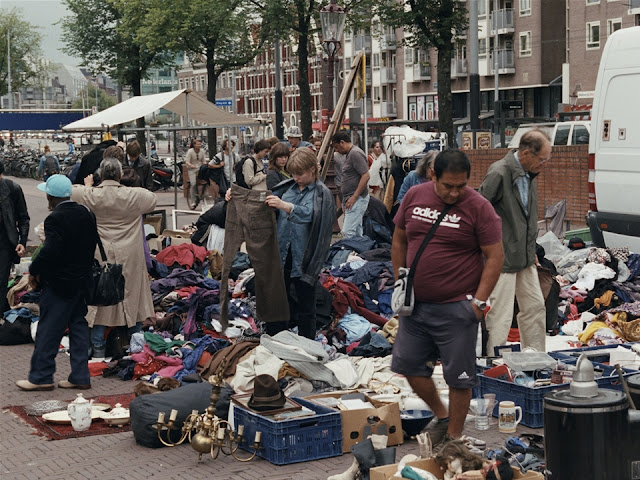Steve McQueen's films often employ a sense of the familiar and the traditional while broaching harrowing stories, filling frames with visual flair. Recently, Lovers Rock, an extraordinary cinematic piece of music, dance, sound, imagery, emerged as a small, yet impactful strand of Black West Indian experience in the United Kingdom around 1980 within his Small Axe opus. McQueen's latest is a swerve in another direction, but still deeply invested in specificity and the historical--a seemingly daunting documentary piece at an over 4-hour runtime that intertwines the COVID-19 pandemic with the reverberations of the Holocaust. It's a disarming picture at first, but once the rhythms are established, it becomes mesmerizing. Shot on film, with rich compositions by cinematographer Lennert Hillege, the movie wanders through Amsterdam, with even-toned narration from Melanie Hyams reading sections of Bianca Stigler's (Three Minutes: A Lengthening) Atlas of an Occupied City, Amsterdam 1940-1945. With stylistic shades of Alain Resnais's Night and Fog, the film roams rooms, buildings, city squares and a milieu of other settings in the "present day" (though now, a very specific "past" of early 2020 into 2021) where previous atrocities occurred during the Nazi occupation of Amsterdam. Though inviting of comparisons, the film is a parallel running of two different, yet significant histories within a specific place. In some ways, it might be one of the most significant filmic examinations of the pandemic yet. Visually, we witness the changing of the seasons and also the changing of the pandemic, from the wintry lockdowns of paranoid masked pedestrians, curfews and shuttered stores to the hopeful springs of gatherings and vaccinations, while listening to Hyams read veritable passages of history. Many sites where atrocities occurred where changed, built-over, or dryly noted as "demolished." The pandemic just happened to fall in the midst of filming, but what is ultimately captured within this picture's many frames is a fascinating orb, filled with juxtapositions of time and space and bodies (we see the very young--children going up and down the sides of snowy, icy hills and also, the old, doing small group strengthening exercises).
The expansive, humanistic scope of this film will likely carry it into high regard as a piece of well-observed chronicling as time passes. Ultimately I found the length of the film fitting to its subject matter and also an interesting experiment; it has a cumulative power that can feel simultaneously deadening and staggering. But taking the film in fragments could be an intriguing test too--just how much can forms of film and language effectively capture? How much does the imprint of history make an impact if it seems so "unseen"? Music and sound play roles as well--from the natural world and city sounds to the yawning, ghostly score from Oliver Coates, source music like autotuned-hip hop and Roxy Music's melancholic "Avalon" playing happenstance on a street corner. David Bowie's "Golden Years" suddenly rolls out in one sequence, introducing a sense of change within the era as the elderly get their first vaccinations. It's also a haunting reminder of the very last living generation from Atlas's time period who, in years to come, will eventually shuffle off in this new age. Sometimes I listened carefully to the words, other times I was so enraptured in the visuals that I tuned out the narrations. Overall the visuals are vivid, sometimes dramatic--such as climate change and social justice protests--and sometimes slightly comical, surprising. The deep knowing of the temporal through the steady and deliberate direction of McQueen and editing by Xander Nijsten (a monumental achievement) provides a unique take on history, mortality and the human experience. ***1/2
-Jeffery Berg


No comments:
Post a Comment